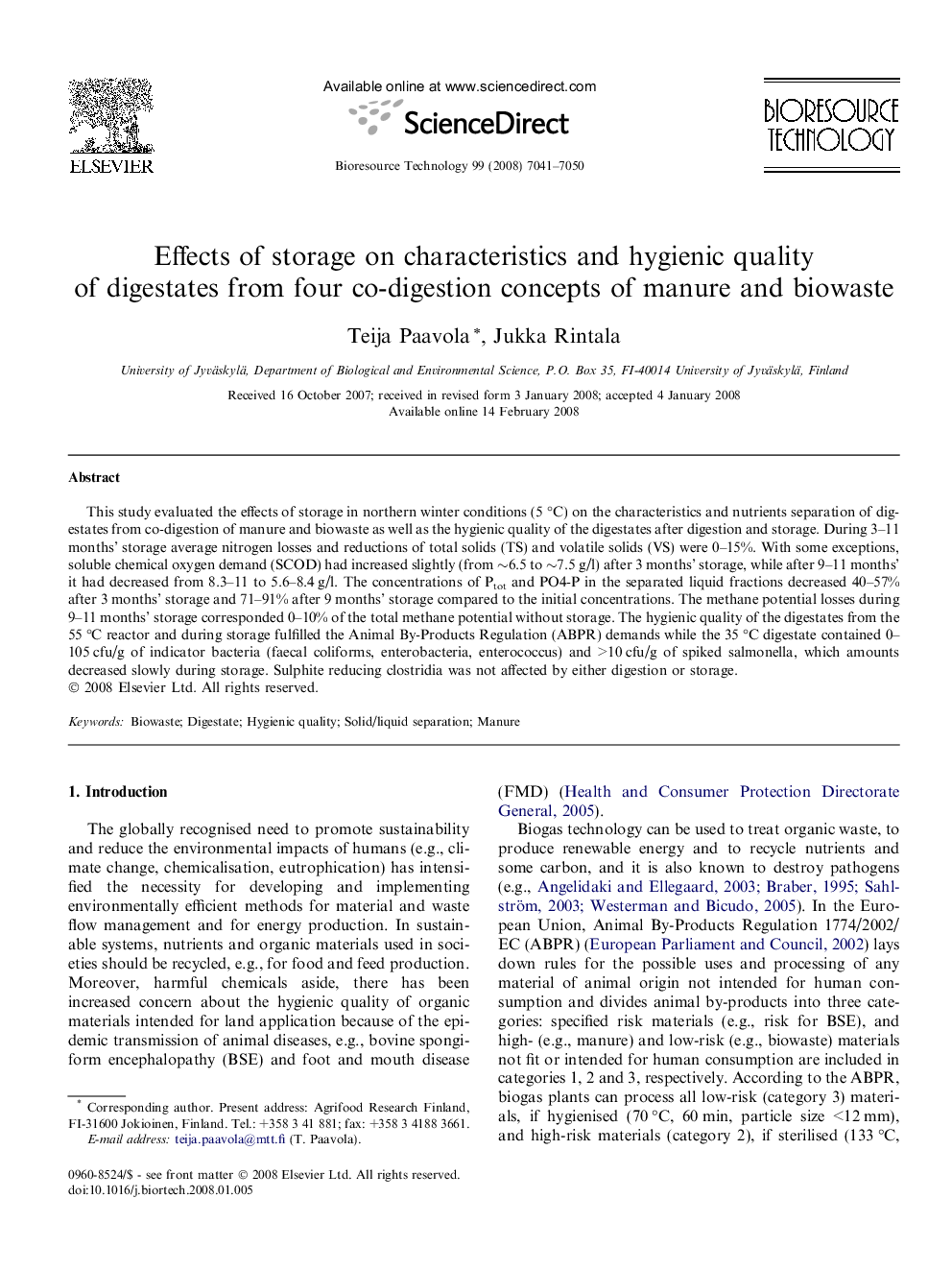| Article ID | Journal | Published Year | Pages | File Type |
|---|---|---|---|---|
| 685287 | Bioresource Technology | 2008 | 10 Pages |
This study evaluated the effects of storage in northern winter conditions (5 °C) on the characteristics and nutrients separation of digestates from co-digestion of manure and biowaste as well as the hygienic quality of the digestates after digestion and storage. During 3–11 months’ storage average nitrogen losses and reductions of total solids (TS) and volatile solids (VS) were 0–15%. With some exceptions, soluble chemical oxygen demand (SCOD) had increased slightly (from ∼6.5 to ∼7.5 g/l) after 3 months’ storage, while after 9–11 months’ it had decreased from 8.3–11 to 5.6–8.4 g/l. The concentrations of Ptot and PO4-P in the separated liquid fractions decreased 40–57% after 3 months’ storage and 71–91% after 9 months’ storage compared to the initial concentrations. The methane potential losses during 9–11 months’ storage corresponded 0–10% of the total methane potential without storage. The hygienic quality of the digestates from the 55 °C reactor and during storage fulfilled the Animal By-Products Regulation (ABPR) demands while the 35 °C digestate contained 0–105 cfu/g of indicator bacteria (faecal coliforms, enterobacteria, enterococcus) and >10 cfu/g of spiked salmonella, which amounts decreased slowly during storage. Sulphite reducing clostridia was not affected by either digestion or storage.
